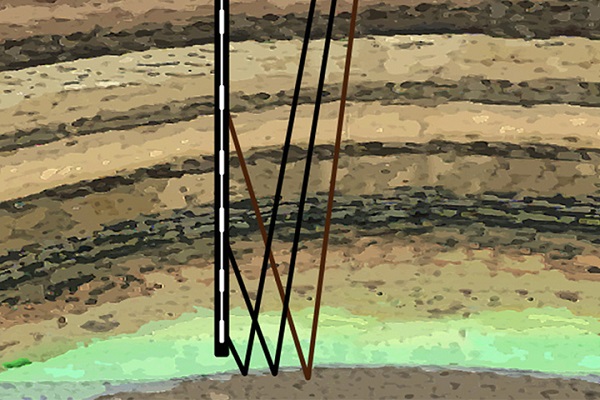Dana Energy’s research project to achieve higher precision in zero-offset vertical seismic profiling
Vertical Seismic Profiling (VSP) is a useful seismic measurement technique that helps to obtain various geological information in a site. It often works as a supplementary method alongside surface seismic data, providing an image of the subsurface layers and describing formation rock properties at a high resolution. While creating waves by an energy source, a sensor is lowered to a sequence of selected depths in a well, using a wireline. This way, the receiver can record both downgoing and upgoing wavefields. Correlating these results to surface seismic and well-logging data, the operators can better understand the subsurface formation and properties in a borehole, thus making more accurate drilling decisions.
However, depending on the project’s properties and limitations, sometimes only one method of VSP (i.e. zero offset VSPs, offset VSPs, Walkaway VSPs, etc.) can be applied, limiting the amount of data that can be obtained. Therefore, it is crucial to improve these techniques to compensate for these limitations.
NISOC (National Iranian South Oilfields Company) is a significant drilling corporation in Iran. They rely mostly on zero offset methods to obtain VSP data at drilling sites. So, they asked Dana Energy to develop a new method that can determine the Dip, Azimuth, Velocity and Depth of subsurface layers under the drilling bit, using 3CVSP data. Partnering with UTSTPark (the University of Tehran Science and Technology Park), our researchers began their work. There were many challenges to overcome. Calculating azimuth is difficult for zero offset VSPs. Using a wireline to descend the sensor through the borehole results in the receiver randomly rotating, making the horizontal component unreliable. Also, most VSP data for these projects were not thorough enough. To compensate for all of these, we had to develop new ideas, and even develop a new practical software.
The result was a unique work. Our method not only accurately determines subsurface characteristics but also calculates the S wave velocity and azimuth. The closest model to ours, developed by Siesdip, uses directional information to calculate azimuth, whereas our model does so even without such information. Overall, our model helps to obtain more accurate data while reducing costs.
Dana Energy is a knowledge enterprise. We value R&D as it drives the process of creating knowledge and solving problems. That is why we handle our research projects with such focus and precision that we have become one of our industry’s most trusted partners. Because we believe that through collaboration, creativity, and dedication, we can always find better solutions for every problem.
Special gratitude to Mr. Kiani for providing the technical information on this article.

We Answer Your Questions